
We enjoyed our night at the funky Hostel on the Hill and a drink and meal around the corner at Favo’s where a band played to their hippie blow in mates and in the early morning we headed off to rejoin the trail at Praia do Barranco, another hippie surfer hang out. So rather than go back down the tarmac road from Hortas do Tabual to Zavial we struck southwest on some dirt tracks that wound through mostly abandoned farmland ( but we saw some signs of caravan homesteads. Maybe someone from the night before).





Even quite far out in the campo there were some smart houses with smarter gardens but mostly the way was wild and getting wilder as we approached the coast.




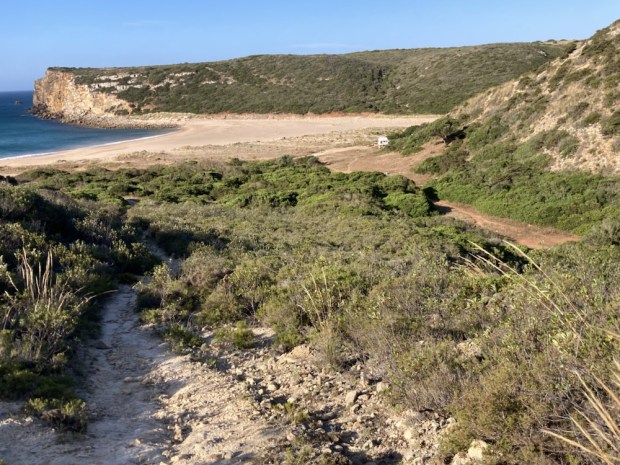
There were maybe half a dozen live in vans of surfers parked up at the beach and one very smart, very big German campervan that headed off soon after we got there. Maybe they went in search of more amenable neighbours. We stopped to chat to a young fella ,( they’re all young to us), who was going from Sagres to Burgau that day god help him. That’s 8 tough km more than the already toughest day of the entire trail.
He pointed out our route, a long sloping rocky path leading to a flat prairie land high above the beach. A very different zone


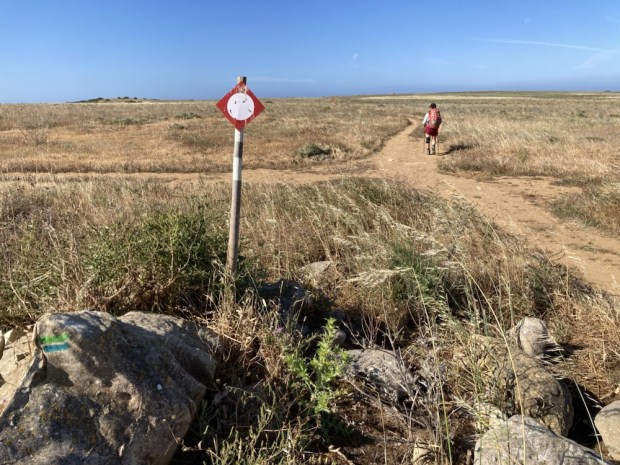
It was more abandonment. I don’t know if this was grazing, grain or grassland but the imposing farmhouse was long empty and the dirt roads led hither and thither to no obvious purpose. The nasty looking thistles were taking over. Maybe the butterflies liked them.
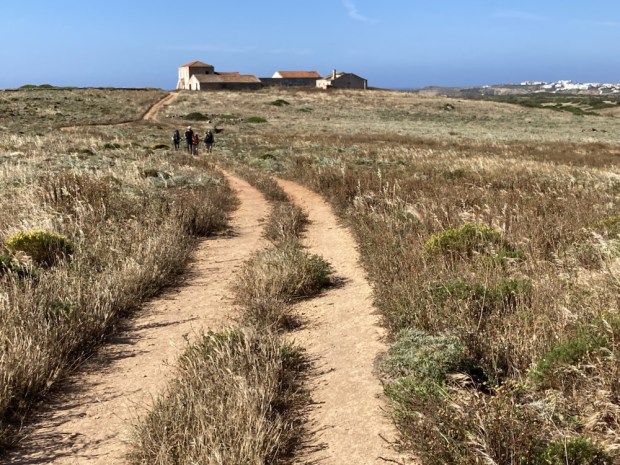


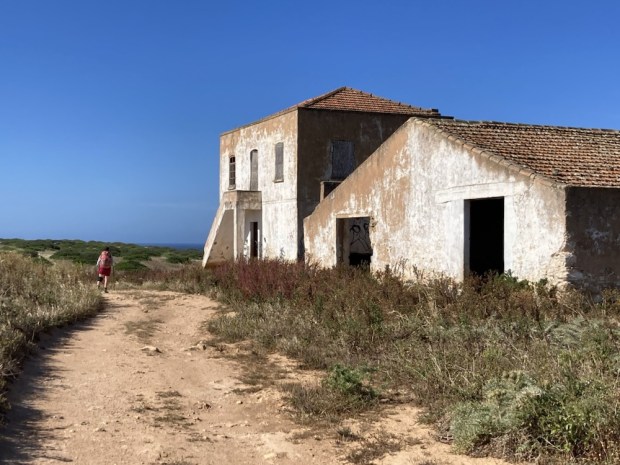

Crossing the headland we came slowly back down to the coast where fierce erosion had left fluted sculpture in the clay. The clay here had supported a big Roman industry of amphora potteries for packing fish in for export around the empire.


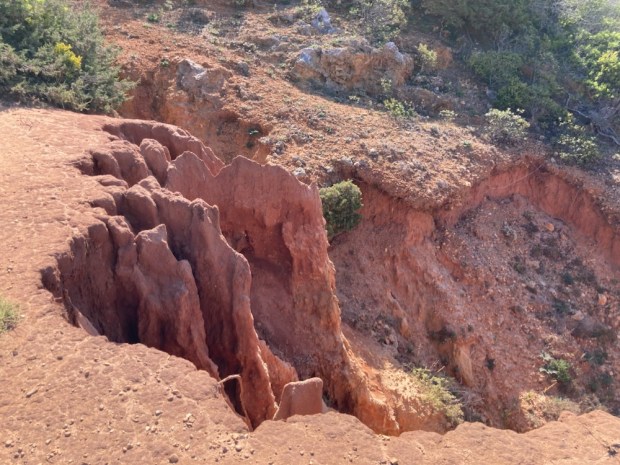
The coast under us was more rugged here with rocky coves and the Martinhal islands just off the shore. There was lagoon resounding to the call of the frogs hiding under a skin of algae, a smart resort with trackside loungers and then, blessed relief, a beach bar on the outskirts of Sagres.
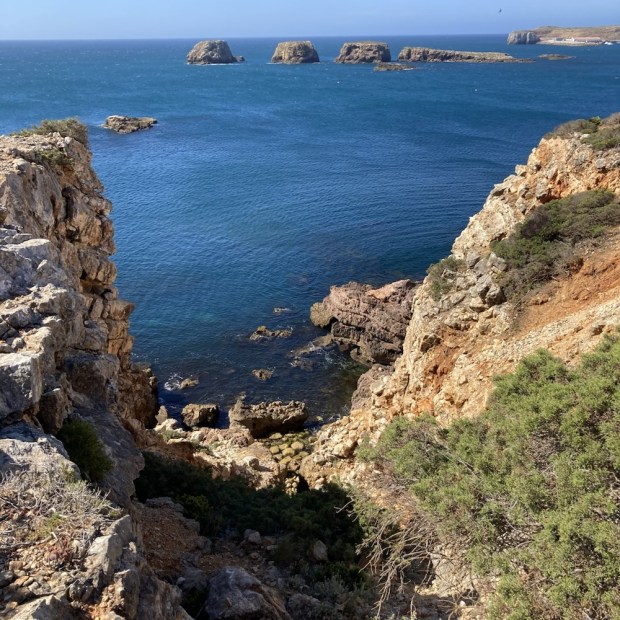
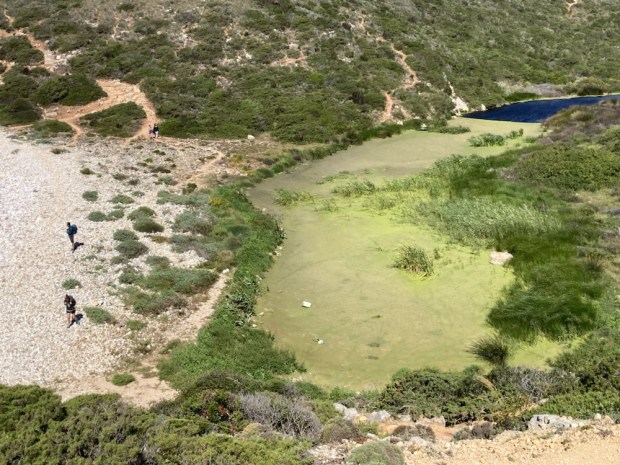

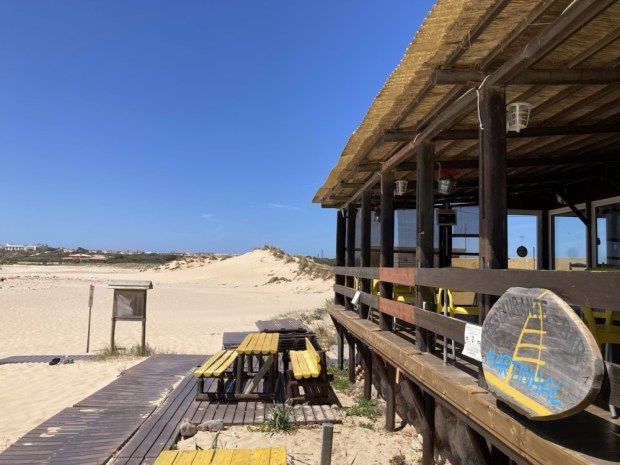
Google maps devised an interesting route to our bed. On salted tracks past rivers of dried algae, up narrow paths between the flowering storks of agave and through development zones. All worth while when we got there and cooled off in the pool.
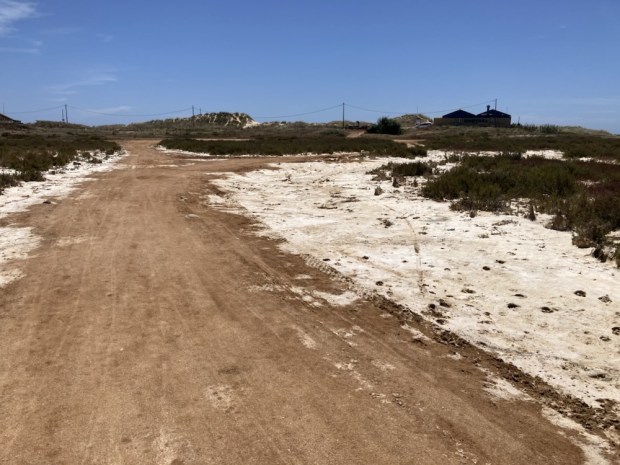

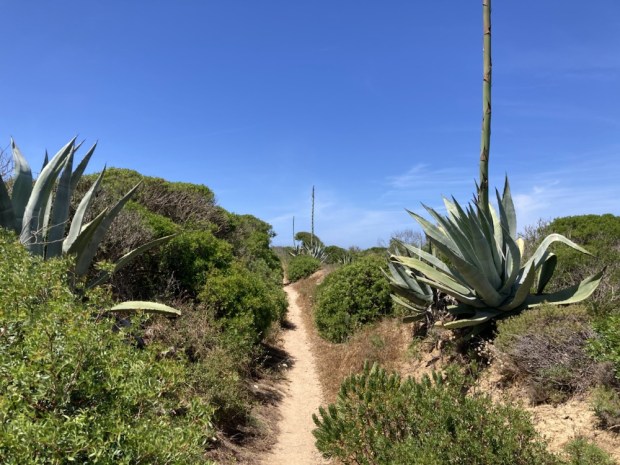
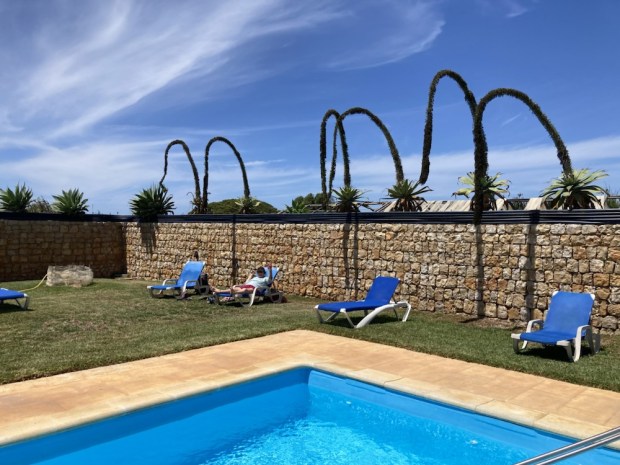
A cab ride out to the lighthouse on the Cabo in the morning bypassed 5 km of roadside trail and shortened our days hike from 20km to a more manageable 14km. Too early to be open it was nice to be there without the tourist crowds. This place has been special and sacred to many peoples over millennia. There is a rich concentration of Neolithic menhirs in the area and both the Greek and the Romans had temples here. In fact Sagres is derived from Sacrum meaning ” sacred place”and the body of the martyr, St Vicente , whom the cape is named after were supposedly washed up here. A shrine guarded by ravens was built over the grave till the body was moved to Lisbon in 1173 still accompanied by the ravens.




We had to turn back up the road for a little ways before turning onto the track heading north up the Wild West coast from the most westerly point of Europe. The thick rich vegetation was as we remembered from our previous trip and the stony track too.





This whole area , the Parque Natural do Sudoeste Alentejano e Costa Vicentina, is famous for its bird life and there is a birding festival in Sagres every October. The flora is also particularly spectacular with hordes of species endemic to the area. Im afraid I can’t tell you the names of them but I recognise many from home and also our last trip here. There were so many beautiful little natural rockery gardens all around us it was stunning. Some of the miniature gorse had grown as if a gardener had lavished hours of topiary upon them.






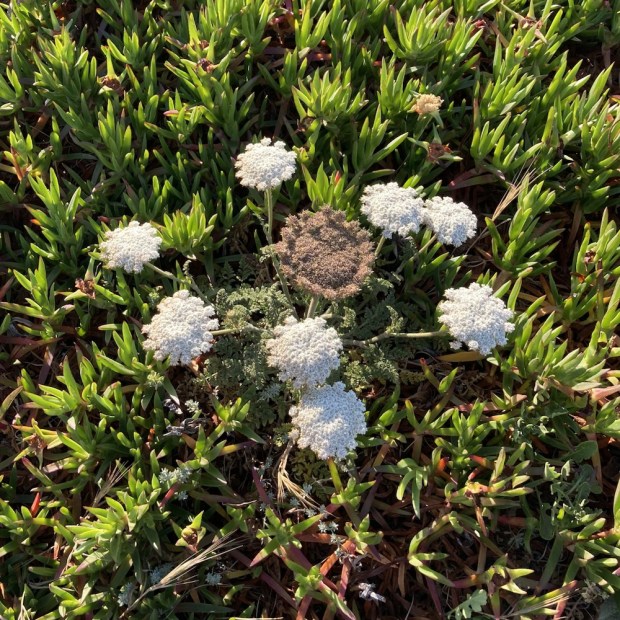

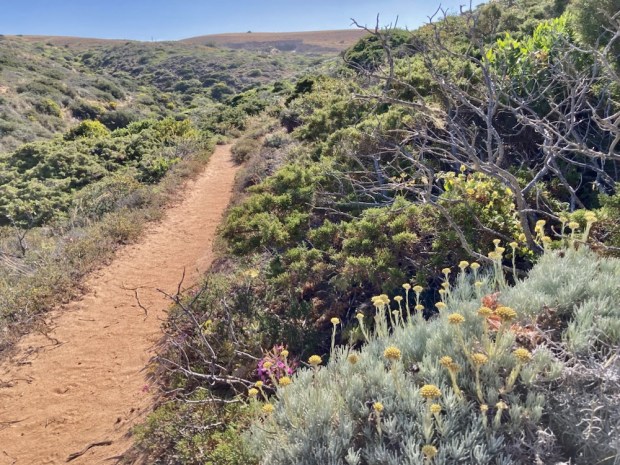
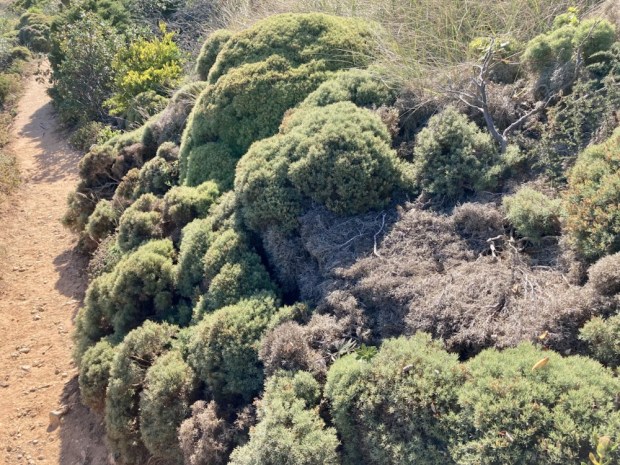
The roar of the ocean was a constant companion and we had many opportunities to marvel and the multi hued rocks, geological splendours , fine sand beaches and crashing waves.




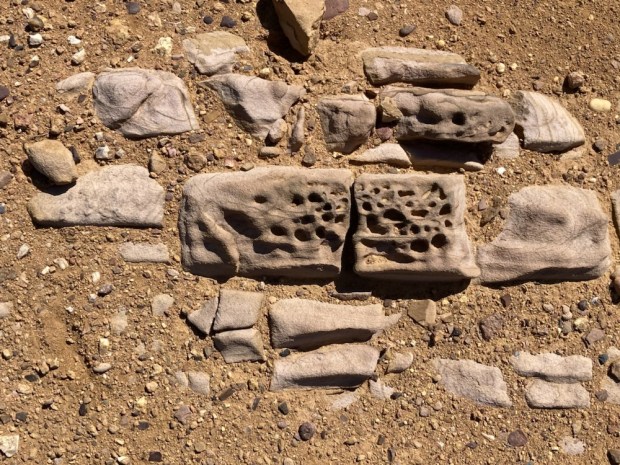
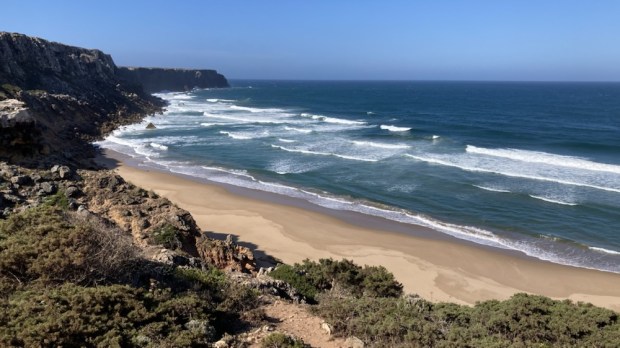
The wind however was blowing hard enough for official weather warnings. With the strong wind from the north we remembered why the official advice is to walk north to south. The low growth and sprawling habit of the plant life attested to the prevailing conditions.

Eventually we came to where we joined up with the Historical Way, another network of trails that works its way up and down the west coast of Alentejo province. This coincided with major track ” improvement” and a newly laid thick gravel surface.
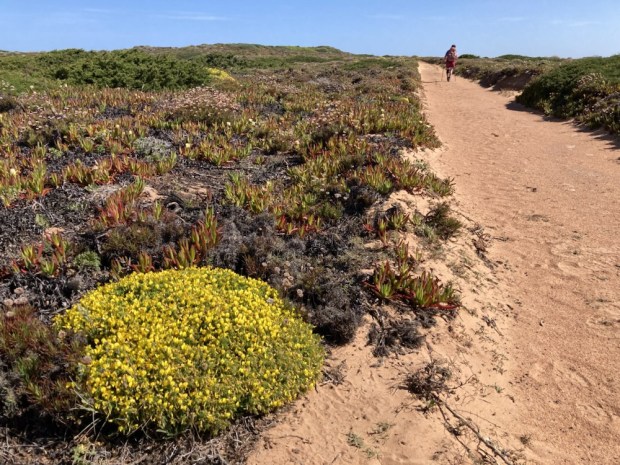

A few strange things came and went. Boars jaw, hi tech structure, dust clouds and a field of goats and sheep with no fence to restrain them. A wind formed wood and poor crops led us into Vila do Bispo.
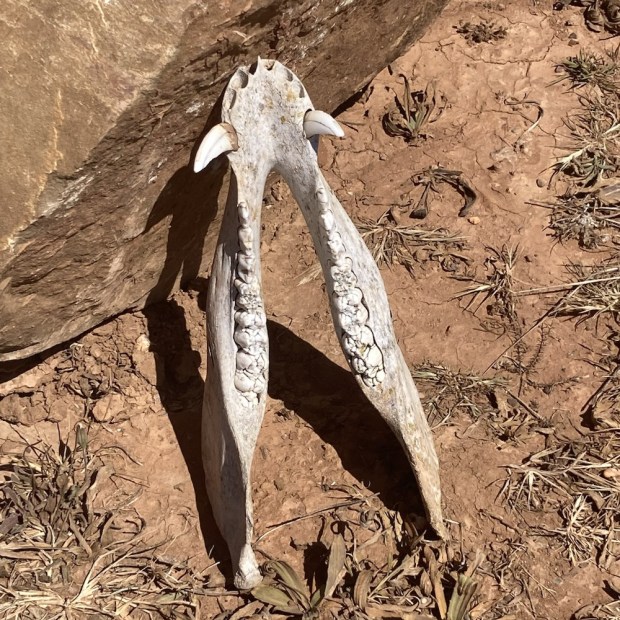

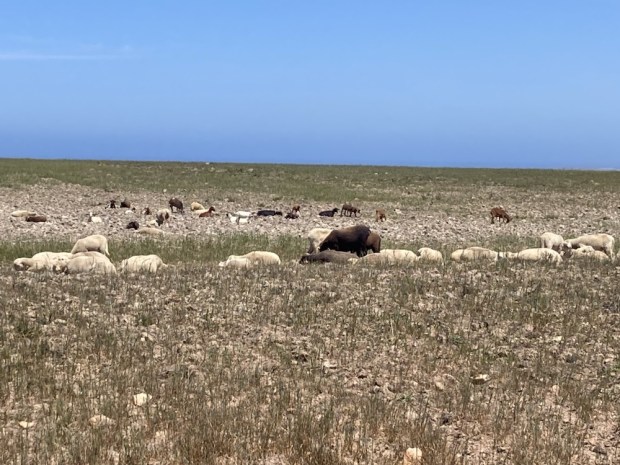
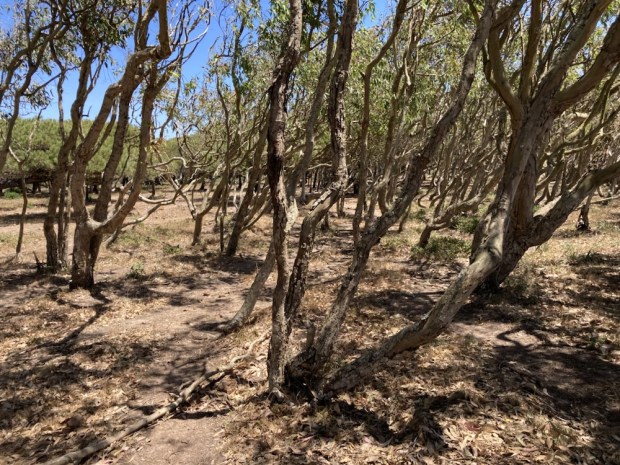
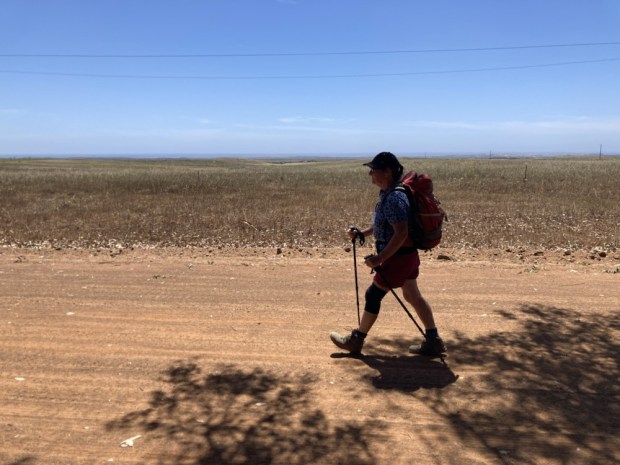
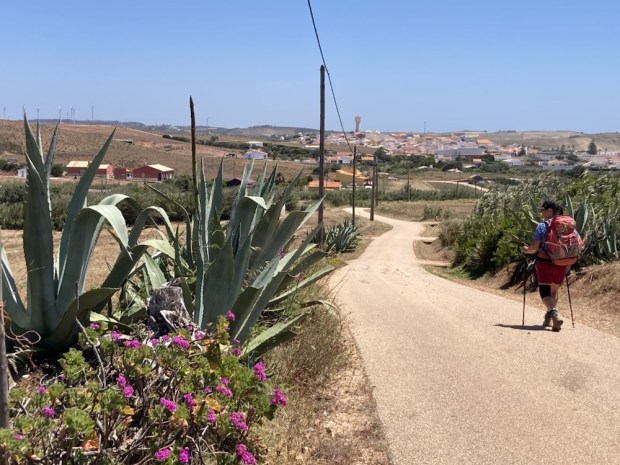
Here we meet up with 3 friends from Spain who join us for a few days walking.
Falling in love with the photographer
LikeLike
your journey is the ultimate in rambling fusion while embracing the inner hipster , your boots are defiantly made for walking , thank you
LikeLike